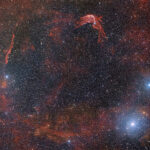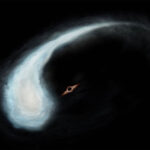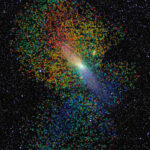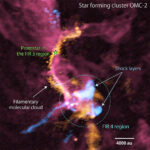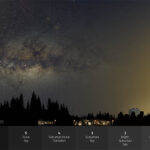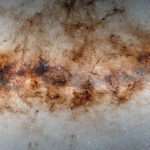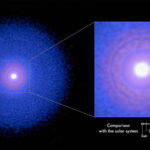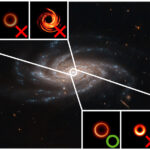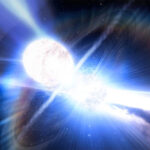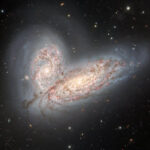Blast from the Past!
Behold! the traces of the first-ever supernova recorded in history! A ring of glowing remains of the first-ever recorded supernova, a white dwarf star that exploded more than 1800 years ago. Credit: CTIO/NOIRLab/DOE/NSF/AURA Rector (University of Alaska Anchorage/NSF’s NOIRLab), J. Miller (Gemini Observatory/NSF’s NOIRLab), M. Zamani & D. de Martin (NSF’s NOIRLab).…
A Bird? A Plane? A Tadpole?
On a sunny day with a blue sky filled with clouds, try stepping out into your garden or go for a walk. Now look at the clouds above. Use your imagination and try to make out as many interesting patterns or shapes that you can see — like a sky…
Surprise Surprise! Stars Moving into Another Galaxy
Life is unpredictable, and you never know when the next exciting adventure comes knocking at your door. Sometimes it might require you to pack your bags and move to another town or a new country altogether. Guess what! You are not alone: stars do it, too! Striking new evidence for…
High – Speed Baby Star Tantrums
Little fights over toys or candies are quite common in human households with siblings. In most cases, parents settle those adorable little disputes by sharing things. It is an entirely different story when the siblings in picture here are two baby stars and their home is a 'star forming cloud’…
Twinkle Twinkle Little Stars, How We Wonder WHERE You Are
Have you ever wondered why only fewer and fewer stars appear in the night sky, especially if you live in a city? A recent study by NOIRLab’s educational project ‘Globe at Night’, shows how light pollution is increasing fast, taking away the majestic view of our starry night sky. This…
Counting A Sky Full Of Stars
Have you tried counting the stars in a clear-night sky? How many bright objects can you identify? The Dark Energy Camera (DECam), built on the Cerro Tololo Inter-American Observatory (CTIO) in Chile, captured the most detailed picture of the galactic plane of our Milky Way as seen from the southern sky. And astronomers…
How to Directly Weigh A Protoplanetary Disk?
What if we could ‘directly’ weigh a planet-forming disk without even visiting one? A group of astronomers from Japan have found a new technique to do so and it turns out to be the best method of all. Observational image of the protoplanetary disk around TW Hydrae showing the distributions of solid…
AI Reveals Black Holes and Galaxies Grow up Together
Astronomers recently found that the growth of a galaxy and the growth of the supermassive black hole at its centre have a lot in common. By training a computer to study and model the data, scientists were able to confirm this decades-old theory. This is a concept illustration: Machine learning…
Gamma-ray Bursting with Surprises
For the first time, astronomers found surprising clues of a ‘kilonova’ – a huge explosion sparked by the clash of neutron stars when studying the “post-credits-scene” of a long gamma-ray burst. But what makes this kilonova discovery surprising? How did two different teams of astronomers discover the same surprising results? Let’s explore! This artist's…
Gemini North catches a beautiful pax-de-deux
Using the Gemini North telescope in Hawai'i, astronomers have just caught a spectacular image of a cosmic event around 60 million light-years away from us in the direction of the Virgo constellation. The image is of two spiral galaxies, NGC 4568 and NGC 4567 are in the process of merging…

